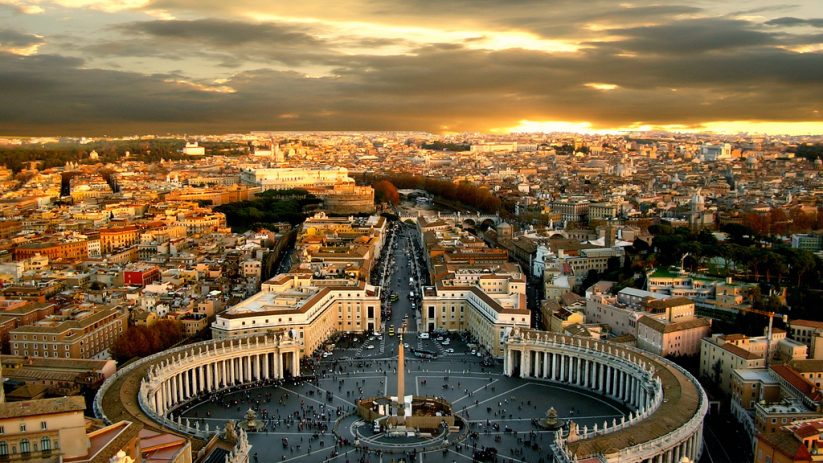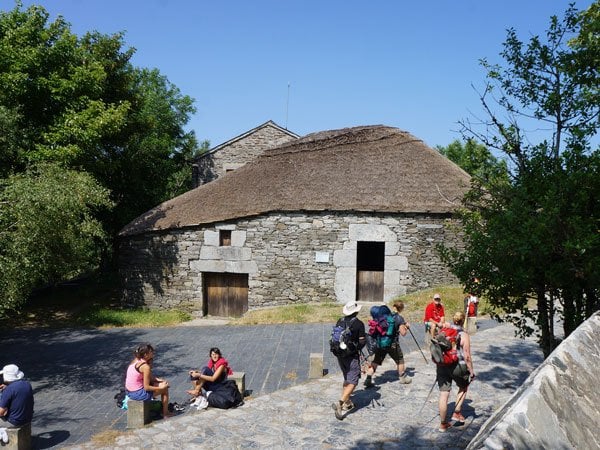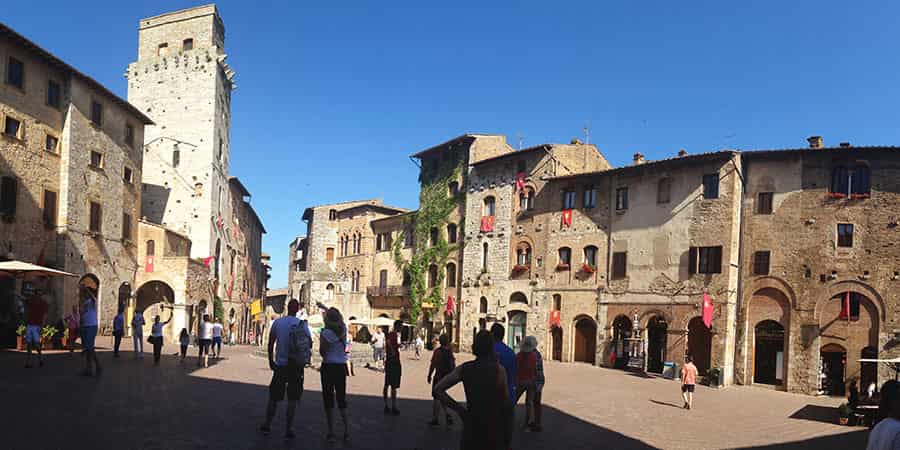How to choose between the Camino de Santiago vs Via Francigena?
In this piece, we delve into the fascinating world of Europe’s most renowned heritage trails: the Camino de Santiago and the Via Francigena. Both paths are steeped in history and offer unique journeys for travellers seeking spiritual, cultural, or physical challenges. But how do they compare, and which one is the right choice for you?
Frequently Asked Questions
Is the Via Francigena similar to the Camino de Santiago?
Both the Via Francigena and the Camino de Santiago are historic pilgrim routes that have attracted travellers for centuries. While they share the purpose of leading pilgrims to sacred sites, each offers a distinct experience shaped by the landscapes, cultures, and histories they pass through.
How does the Via Francigena (Camino to Rome) compare to the Camino de Santiago?
The Via Francigena, often referred to as the Camino to Rome, and the Camino de Santiago are two of the most iconic pilgrimage routes in Europe. Comparing them is like exploring two different chapters of a grand historical narrative, each with its own set of adventures, spiritual encounters, and natural beauty. The Via Francigena winds its way to Rome, offering a journey through varied landscapes and historical sites, while the Camino de Santiago culminates at the revered site of Santiago de Compostela in Spain.
What can I find along the way?
Embarking on either of these journeys, you will discover a rich tapestry of experiences. From breathtaking natural sceneries to architectural marvels and culinary delights, both routes offer an abundance of discoveries. The real treasures, however, are the personal insights and transformations many travellers encounter along the way.
Exploring the Roots: Camino de Santiago & Via Francigena
Delve into the origins of two of Europe’s most storied pilgrimage routes: the Camino de Santiago and the Via Francigena. These long-distance walking paths trace the steps of medieval pilgrims, leading adventurers across breathtaking landscapes steeped in history.
Recognised European Cultural Itineraries
The importance of these trails extends beyond their historical and spiritual significance; they have been acknowledged as European Cultural Itineraries, highlighting their contribution to Europe’s cultural heritage.
The Camino de Santiago
Pioneering the European Cultural Itinerary designation, it has been recognised by UNESCO since 1987, underscoring its profound historical and cultural importance.
The Via Francigena
Since 1994, this route has also been celebrated as a European Cultural Route, marking its significance in connecting diverse cultures and histories across the continent.
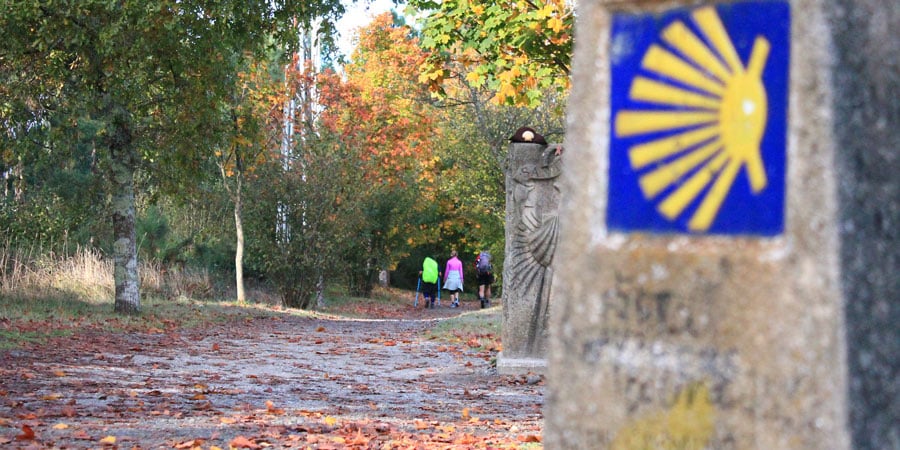
The Journey Unveiled: Camino de Santiago vs. Via Francigena
Discover the unique paths each pilgrimage offers, from the well-trodden to the roads less travelled.
The Camino de Santiago: A Tapestry of Routes
The Iconic Camino Frances
- Distance: 800km/500 miles
- Highlights: The Camino Frances is the most celebrated route, immortalised in countless books, films, and documentaries. It offers a rich blend of cultural and historical experiences.
Alternative Paths
For those seeking paths less travelled, the Camino de Santiago presents several intriguing options:
- Camino Portugues: A journey from Portugal into Spain.
- Camino del Norte: Traverses the northern coast of Spain.
- Finisterre Camino: Extends to the “end of the world” at Cape Finisterre.
- Camino Primitivo: Known as the original path to Santiago.
- Camino Inglés: Traditionally used by pilgrims from Northern Europe, particularly England and Ireland.
- Via de la Plata: (also known as the Camino Mozarabe) crosses the whole of Spain from South to North.
- Each alternative route offers a distinct experience, from serene landscapes to rich historical insights.
The Via Francigena: A Historical Odyssey
The Classic Route
- Distance: 1,900km/1,180 miles
- Journey: From Canterbury to Rome, retracing the steps of Sigeric the Serious, the 10th-century Archbishop of Canterbury. This pilgrimage is a cross-continental adventure, beginning at Canterbury Cathedral, crossing into France from Dover to Calais, weaving through the WWI battlefields of Northern France, the Champagne region, the Swiss Alps, and into Italy via Aosta, the Apennines, Tuscany, and Lazio, before culminating in Rome.
Alternative Routes
Explorers looking for varied experiences on their way to Rome have options:
- Saint Francis Way (Via Francigena di Francesco or Cammino di Francesco): A spiritual journey from Florence to Rome.
- Via Francigena of the South: Explores the southern landscapes en route to the Eternal City.
Each path, whether through the Camino de Santiago or the Via Francigena, offers a unique blend of adventure, spirituality, and cultural immersion, inviting travellers to embark on a journey of discovery and personal growth.
The Growing Popularity of the Camino Trails
In terms of numbers, the Camino de Santiago, especially the Camino Frances draws in 60% of all travellers and welcomes thousands of pilgrims from across the world each year.
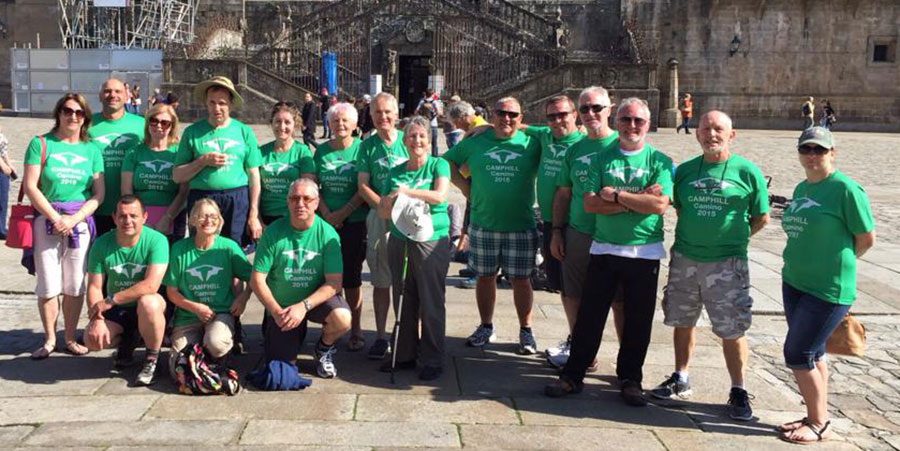
The Pilgrims Office in Santiago, responsible for compiling statistics and maintaining records of all ‘Compostela’ certificates issued (a pilgrimage certificate awarded upon reaching Santiago), reported that in 2023, over 446,000 individuals were awarded the ‘Compostela’.
This figure does not account for the pilgrims traversing the routes in France (unless their journey extends to Santiago) or those starting their pilgrimage from Santiago on the Finisterre Way. It’s estimated that an additional 400,000 individuals walk portions of the various Camino routes without concluding their journey in Santiago.

Accurate figures for the Via Francigena are harder to obtain and are significantly less than those for the Camino. In 2022, according to ViaFrancigena.org, 50,000 pilgrims either walked or cycled the Via Francigena. Given the extensive length of the Via Francigena, it’s also difficult to gauge the total number of pilgrims who journey along sections of the trail without completing the trek to Rome.
Guideposts Along the Pilgrimage Paths
Navigating the Camino de Santiago: Symbols of Guidance
The Yellow Arrow and Scallop Shell: Icons of the Camino
The Camino de Santiago is marked by the universally recognizable symbols of the yellow arrow and the yellow scallop shell, guiding pilgrims along every route.
In France, these symbols are combined with the red and white stripes indicative of long-distance hiking trails.
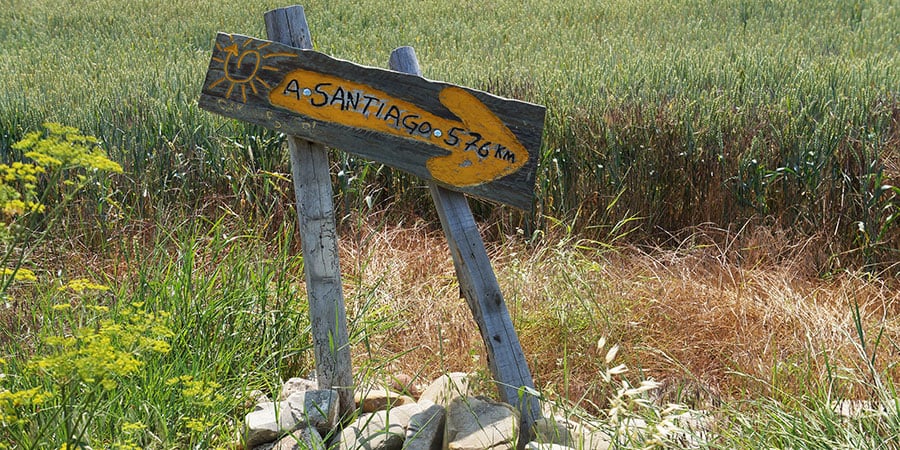
Navigating the Via Francigena: Markings and Signs
Markings in Italy: Clear Paths to Follow
In Italy, the Via Francigena is clearly marked with red and white stripes and the Francigena pilgrim symbols, guiding pilgrims along their journey.
Beyond Italy: A Varied Landscape of Signs
Finding your way in France, Switzerland, and the UK can be more challenging. Travellers should be prepared to encounter a variety of Francigena markings, including the pilgrim symbol, the red and white stripes, or a combination of both.
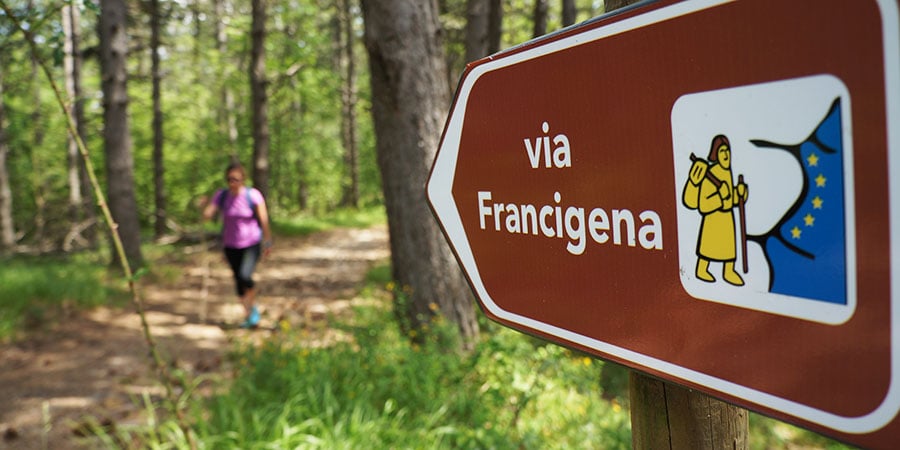
Journey Duration: Camino Frances vs. Via Francigena
Camino Frances: A Month-Long Trek
- Distance: 800km
- Time Required: Approximately 1 month to complete the full Camino Francés.
Via Francigena: A Three-Month Expedition
- Distance: 1900km
- Time Required: Around 3 months to traverse the entire route.
Fortunately, both paths allow you to walk any section that interests you, including this popular segment of the Via Francigena!
Earning Pilgrim Certificates
The Camino Compostela Certificate
This certificate, a testament to their journey, is awarded to those who complete the Camino de Santiago. Additionally, pilgrims can receive the Finisterrana to reach Finisterre and the Muxiana to visit Muxia.
Via Francigena Pilgrim Certificates
Pilgrims journeying from Acquapendente or Viterbo on the Via Francigena are also eligible for specific pilgrim certificates celebrating their accomplishments on this historic route.
Choosing Your Pilgrimage Experience
For Social Interaction: Camino Francés & Camino Portugués
Recommended Routes: The Camino Francés and the Camino Portugués, starting from Porto, are perfect for those seeking camaraderie and social interaction during the pilgrimage.
For Scenery, History, and Solitude
Alternative Routes: If you want to immerse yourself in the landscapes, historical sites, and overall journey without the emphasis on meeting other pilgrims, exploring other Camino routes and the Via Francigena would be an excellent choice.
Expert Guidance on Your Journey
Do you need advice on selecting the right section for your pilgrimage? Our travel consultants help you weigh the options between the Camino de Santiago and the Via Francigena.
Don’t hesitate to contact us for more detailed information and personalized advice about the Camino de Santiago and the Via Francigena.
